This post may contain affiliate links. If you make a purchase through a link, I may receive a small commission, at no cost to you. These commissions help keep this website up and running, and I thank you for your support. Read my full disclosure here.
Disclaimers: I have in no way been influenced or paid to endorse these products. All recommendations are my own.
Fabrics in their original state are not white and so undergo bleaching, optical brightening chemical treatments and bluing during the manufacturing process. Unfortunately the effect of these treatments fades over time, leaving you with yellowed, dingy grey fabrics. So how can you make your whites white and bright again?
1. Wash with Hot Water
Yellowing can be caused by the build up of grime like grease and oil. Take a moment to think about how soiled pillowcases and sheets get from greasy hair and oily skin, not to mention all of the hair and beauty products that we like to use. Many people prefer to use cold water due to rising energy prices and limited access to hot water, but these types of stains are best removed with moderate 50ºC (120ºF) to hot 60ºC (140ºF) water. If you are still not satisfied with your whites after hot washing them, then do not fear you have not wasted your time. You have just prepared them for the next step of bluing, bleaching – keep reading!
Before Hot Washing…
Check that your fabrics don’t have protein based stains on them like egg, milk or blood. Use stain removers in cool water to remove these first otherwise they will become set in hot water.
2. Enzymes
Washing detergents that do not contain a range of enzymes can leave your whites looking dingy and stained. Enzymes work by breaking up stains and grime in your fabrics and perform best in warm water. Enzymes are biodegradable and non-toxic to plants and animals. Look for a detergent like Seventh Generation laundry detergents that contain a range of enzymes such as Amylase, Protease as well as Lipase or Mannanase. You may need to check the manufacturer’s website for ingredient listings. Be aware that enzyme detergents are not safe to use on wool or silk.
How to use enzyme detergents to whiten fabric
For heavily stained whites, try soaking overnight in warm water mixed with an enzyme detergent (following label directions). Then remove items and put through a machine wash using the same enzyme detergent.
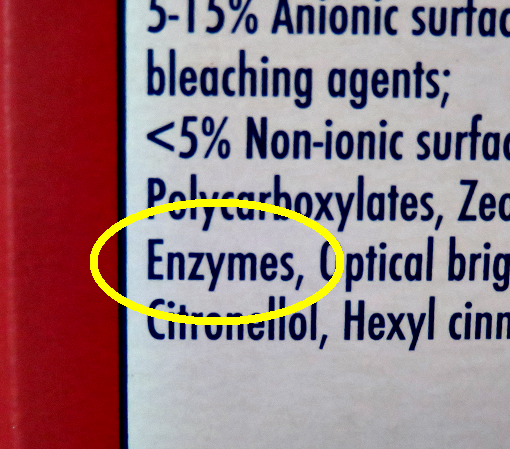
3. Separate Your Whites
Washing whites with coloured fabrics can turn them grey and dingy. It is extremely important to wash whites on their own – no sneaking in other items, no matter how small or light coloured they seem! You may not initially see any obvious colour transfer, but over time the small amount of dye that is released from your coloured clothing will settle onto white fabrics. This will quickly build up and leave them discoloured. If this has happened don’t put them in the dryer as the heat will set the dye. Instead, try using a colour removing product such as Dylon S.O.S Colour Run. If that fails, then try one of the other options discussed in this article. If you must do mixed colour washes, (especially for mixed coloured items) then use a product like Shout Colour Catcher to prevent colour run and wash using lukewarm 30ºC (86ºF) water.
Learn more about colour run and bleeding here
4. Soften Your Hard Water
Unfortunately many of us only have access to hard water which can darken white fabrics and cause hard water stains. Much of the detergent that you add to your wash goes into softening the water instead of cleaning your clothes, so always check the product label to ensure that you get the correct dose required for hard water. The level of water softener that each detergent contains can vary, so consider adding products such as Calgon Water Softener to your wash.
5. Bluing (or Blueing)
White fabrics are pre-dyed with blue in an attempt to prevent yellowing, but this inevitably gets washed off over time leaving the fabric looking yellowed. Bluing products are sold to consumers to allow them to add this blue back in. For this reason, bluing dye is also added to some laundry detergents.
Bluing is typically made from a fine blue iron powder suspended in water. It’s usually sold in liquid form, but can also be found as a solid. In the mid 20th century bluing lost its popularity to bleach and can now be difficult, if not impossible to buy in many countries. It is still sold in Australian supermarkets under the brand “Bluo” (sorry New Zealand, it is no longer sold there). In the USA it is sold under several brands such as Mrs Stewarts Bluing, Bluette and Reckitt’s (imported from France). They can be purchased from Amazon and shipped to the UK, Canada and Europe. Bluing is commonly used in India and Pakistan, so if you still can’t find it, try visiting a shop that specializes in products from these countries.
How to Use Bluing to Whiten Fabric
Like optical brighteners, bluing does not actually clean or remove dirt from your fabrics so it’s important that your items are properly cleaned before using. To use bluing dilute ⅛ to ¼ teaspoon (depending on wash load size) in a bucket of cold water before adding to your rinse cycle. It must not be used with bleach as it could cause blue staining.
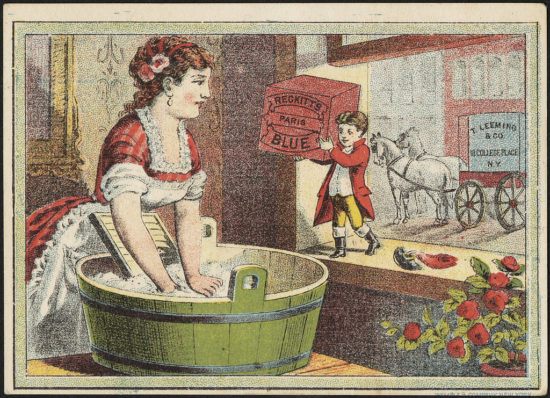
6. Optical Brighteners (Phosphors)
Optical brightener is a fluorescent dye that is added to many brands of detergents such as Tide Bright Original. The brightener absorbs UV radiation and re-emits blue light, which hides any yellow or brown tones on your white fabrics. This is not visible under normal lighting conditions because the fabric is mostly reflecting visible light. Like bluing, optical brighteners don’t actually remove any of the dirt or grime from your fabric, it just gives the illusion that the yellow tinge has been cleaned away by masking it.
To be effective, optical brighteners must permanently adhere to your fabric. They cannot be removed by heat (so forget trying to hot wash them out) or even bleach! However, if not regularly reapplied, it will eventually fade. Optical brighteners can also rub off onto your skin and cause irritation, especially when exposed to light. Therefore, those with skin sensitivities should try to avoid using these products. Optical brighteners are detrimental to the environment and are toxic to fish, animal and plant life. They take a long time to biodegrade, which means they will continue to pollute waterways for some time.
Optical brighteners vary in names because they can be made from a large array of chemicals. It may not be listed on the packaging, so go to the company’s website to get your hands on the full list of ingredients. They can be labeled as any of the following; disodium diaminostilbene disulfonate, disodium distyrylbiphenyl disulfonate, coumarins, naphthotriazolylstilbenes, benzoxazolyl, benzimidazoyl, naphthylimide, and diaminostilbene disulfonates and anything listed as an optical brightener, bleach alternative or fluorescent brightener/dye.
Did you know…
…why your white clothes glow at nightclubs? It’s because they are treated with optical brighteners. Nightclubs use black lights that create lots of UV radiation. In the darkened room the optical brighteners in the fabric have a lot of UV to absorb and very little visible light to reflect, so the blue light that it emits can be seen as the ‘glow’ effect.
Optical brighteners cannot be used in army combat clothing as it makes them more visible both in night vision equipment and in low light conditions.
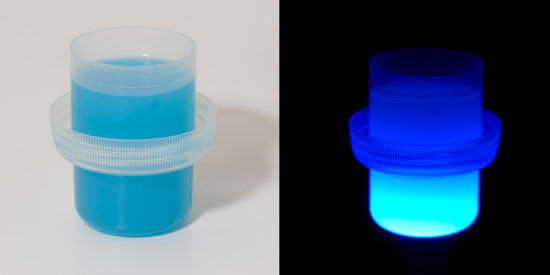
7. Chlorine Bleach
Chlorine bleach is the chemical that we typically refer to when we use the term “bleach”. The liquid version is a solution of sodium hypochlorite and the powder form is calcium hypochlorite. Chlorine is a corrosive substance that needs to be handled with care and should not be mixed with other cleaning chemicals as it could create a very harmful toxic gas. Chlorine works by breaking down the stains chemical bonds. This changes it so that it no longer has colour and can no longer absorb light. It also breaks down the chemical bonds of fabric dye so should only be used on whites.
Chlorine bleach is only suitable for plant based (cellulose) materials such as cotton, linen or hemp. Do not use bleach on polyester and even poly/cotton mixes as it may cause a chemical reaction that can result in the fabric yellowing. It also cannot be used on wool or silk because it can actually eat through the fabric. I once foolishly decided to put chlorine bleach directly on the stain of my beloved cream silk top (I know, it was a rash decision to ignore the warning on the label, but everything else I had tried had failed and I was desperate). It front of my eyes it dissolved the material, creating an instant hole.
When chlorine bleach is used with hard water it can cause yellowing. Some hard water also contains high levels of iron which reacts with chlorine to make iron oxide that then leaves rust stains on your clothes. If this happens then don’t panic, there are products like Iron Out Rust Stain Remover that can remove these hard water stains.
What Is Bleach?
The term bleach is actually just a general description used for chemicals that remove colour, whiten, or disinfect.
How to Use Chlorine Bleach to Whiten Fabric
Chlorine must be diluted before using. Mix 1 cup of bleach with 1 litre (quart) of warm water and then add it to your wash five minutes in. It can lose its effectiveness at high temperatures, so only use with warm water. It will weaken fabric overtime making it prone to tearing, so don’t soak your items longer than five to ten minutes and always rinse it thoroughly. Bleach residue on your clothing can irritate your skin so it is not recommended for those with sensitivities.
8. Oxygen Bleach
Oxygen bleaches have become a common and popular ingredient across all types of cleaning products because it is very effective and safe to handle. There are two types of Oxygen bleach:
Powdered Oxygen Bleach
The first is a powdered peroxide containing sodium perborate, potassium monopersulfate or sodium percarbonate. It is environmentally friendly because the only by-product is soda ash, a biodegradable and non-toxic substance. Unlike chlorine, it is safe to use on colours because it can break the chemical bonds of stains without breaking the stronger chemical bonds in clothing dye. Products are commonly marketed with the word “Oxi” in the title or referred to as “colour safe bleach”, “all fabric bleach” or “non chlorine bleach”. Try an oxygen bleach Stain Remover.

Liquid Hydrogen Peroxide
The second type of oxygen bleach is a liquid called hydrogen peroxide. It is usually sold as a 3-4% diluted solution which is typically safe to use on colours like Seventh Generation’s Chlorine Free Bleach. However, any stronger could bleach them. Although it is safe to be handled at this concentration, be aware that it becomes dangerous to handle at higher concentrations (you may see it sold at higher concentrations, but these are for use in commercial settings so they can make large quantities of diluted product). Hydrogen peroxide is also safe for the environment because it breaks down into oxygen and water. Be aware that hydrogen peroxide must be must be used within a year of opening and stored in a dark place as exposure to light reduces its effectiveness.
How do Oxygen Bleaches Work?
Both types of oxygen bleach work well in hot water. When it combines with water a chemical reaction occurs which releases oxygen bubbles that break down dirt, germs and odours. Oxygen bleach is not as effective for removing oils and synthetic stains, so for best results add some to your enzyme based laundry detergent and use moderate to hot water in your wash. The hot water and enzymes in your detergent remove the grime making it easier for the oxygen bleach to then brighten your whites. Because of the effectiveness of these two products, many laundry detergents now contain oxygen bleach. Oxygen bleach works well in hard water and unlike chlorine bleach it does not react with high levels of iron to cause rust staining.
Oxygen bleach is suitable for most fabrics except wool or silk. Apparently it can fade them but I will admit that I have used powdered oxygen bleach on both silk and wool (me forgetting to read the small print), and I did not observe any negative effect. Perhaps I was just lucky, so I would not recommend this since it’s against the manufacturers instructions!
How to Use Oxygen Bleaches to Whiten Fabric
Soaking
Oxygen bleach: For best results with heavily discoloured whites, try soaking the item overnight in 1 gallon (4.5 litres) of warm or hot water and 1-2 scoops of oxygen bleach for 1-5 hours. Remove clothing and place it in the washing machine and put it through a wash with your normal detergent and ½ to 1 scoop of oxygen bleach.
Hydrogen Peroxide: Use 1oz. (30ml) in 2 gallons (9 liters) of warm or hot water for 30 minutes. Remove clothing and place it in the washing machine and put it through a wash with your normal detergent and 3 oz (85ml) of hydrogen peroxide.
Laundry Detergent Booster
Oxygen bleach: Add ½ to 1½ scoops of oxygen bleach alongside your usual detergent.
Hydrogen Peroxide: Pour 3oz. (85ml) into the washing machine as it fills or use the bleach dispenser.
Seventh Generation produces both types of oxygen bleach products in a free and clear formula which is highly rated by users. If you prefer to use a product with added fragrance, then try Legacy of Clean’s All Fabric bleach.
9. Sunshine
Letting items dry outdoors in the sun can help with the whitening effect and is one of the safest methods to whiten fabrics. The suns ultraviolet radiation rays act as bleach, breaking up the chemical bonds in stains and lightening the fabric. Leave your washing out for a day, but any longer can cause wear and tear on your clothing.

10. Natural Acid – Lemon Juice or Vinegar
Acetic acid in distilled white vinegar and citric acid in lemon juice are excellent natural bleaching agents to whiten your laundry. Both lemon juice and distilled white vinegar are very versatile and can be used on all of your white fabrics, even wool and silk.
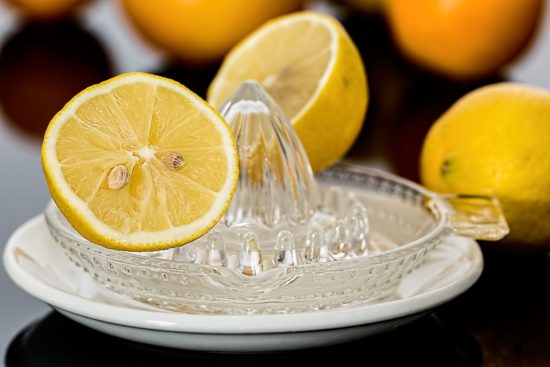
How to Use Lemon Juice and Vinegar to Whiten Fabric
For heavily yellowed whites, soak your items in a basin of hot water mixed with half a cup of lemon juice. The next day wash as usual. For lightly discoloured whites, add half a cup of lemon juice or white distilled vinegar to your rinse cycle. To enhance the bleaching effects dry your items in the sun (as above). You may need to repeat these steps twice before you see the best results.
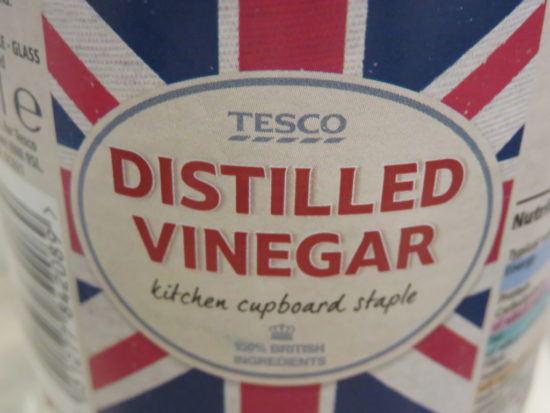
Warning
- As with all chemicals, carefully read and follow the instructions for usage.
- To ensure the best outcome for your fabrics, test in a non-conspicuous area before treating and follow label instructions.

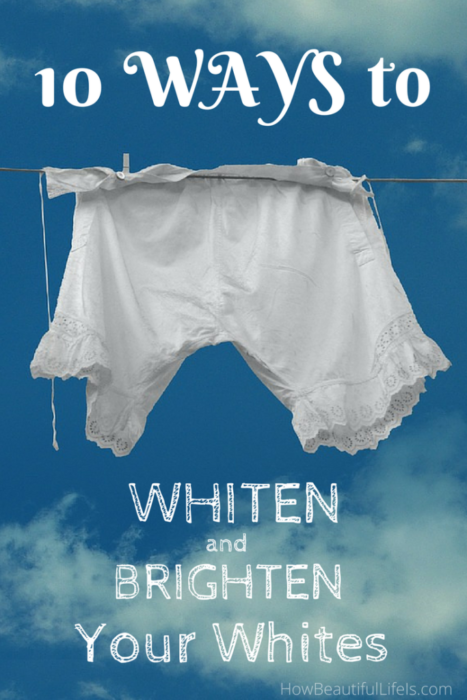
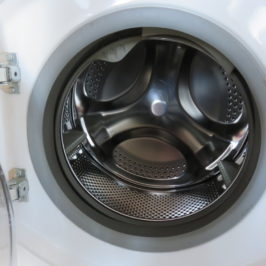

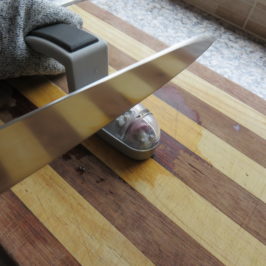
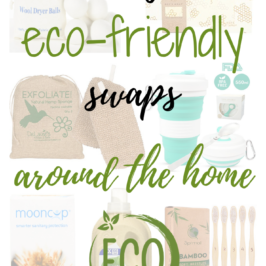
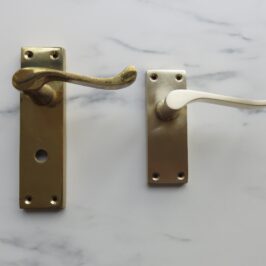
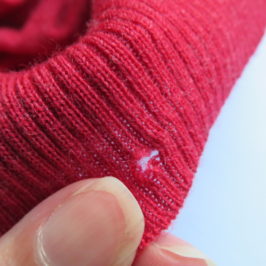
Leave a Reply